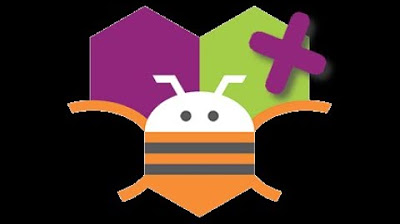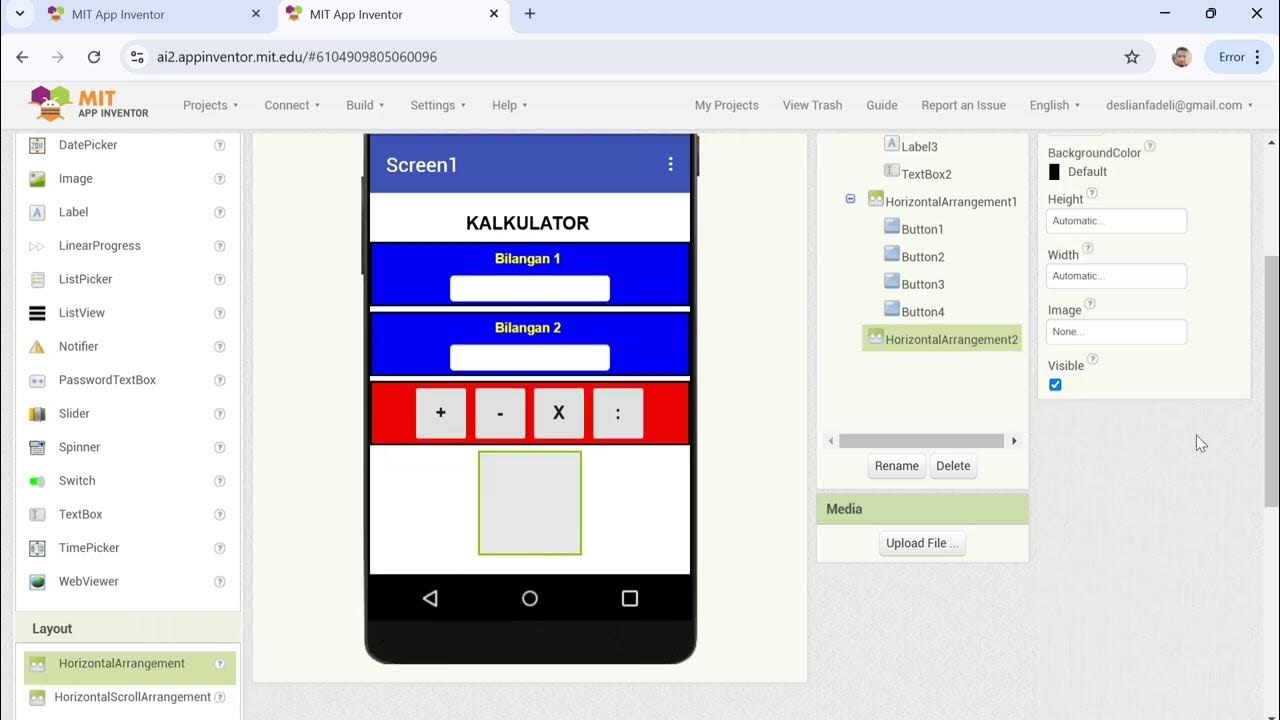PENGEMBANGAN APLIKASI MOBILE DENGAN LIBRARY KECERDASAN ARTIFISIAL
Summary
TLDRThis video explores mobile app development using App Inventor, a user-friendly IDE that allows beginners to create Android and iOS applications. The tutorial covers the differences between mobile, desktop, and web apps, and how App Inventor integrates artificial intelligence (AI) techniques like machine learning and deep learning. The video also dives into the practical application of machine learning for image classification, demonstrating how artificial neural networks (ANN) can be used to identify patterns in images. By combining easy-to-use tools with AI, users can build sophisticated mobile applications efficiently.
Takeaways
- 😀 Mobile apps are essential in today's digital age, designed to run on mobile devices like phones, tablets, and smartwatches.
- 😀 App Inventor is a web-based IDE that simplifies mobile app development, enabling beginners to create apps for Android and iOS.
- 😀 App Inventor uses a drag-and-drop interface, making it user-friendly for non-programmers to build mobile applications.
- 😀 There are three main types of applications: desktop apps, web apps, and mobile apps, each with different development platforms and uses.
- 😀 Artificial Intelligence (AI) refers to systems that perform tasks requiring human-like intelligence, such as reasoning, learning, and decision-making.
- 😀 Machine Learning (ML) and Deep Learning (DL) are subfields of AI. ML uses data to create models that make predictions, while DL focuses on complex pattern recognition using neural networks.
- 😀 Image classification is a key application of ML, where a model is trained to categorize images based on labels.
- 😀 App Inventor supports Firebase integration, allowing the use of cloud data and real-time databases in mobile apps.
- 😀 Artificial Neural Networks (ANNs) are algorithms inspired by the human brain and are used in ML for tasks like image classification.
- 😀 Supervised Learning is a training method where labeled data is used to teach a model, while Unsupervised Learning involves finding patterns in unlabeled data.
- 😀 MobileNet, a pre-trained neural network extension in App Inventor, is used for image recognition and classification, capable of identifying 999 classes from millions of images.
Q & A
What is App Inventor and how is it used in mobile app development?
-App Inventor is a web-based integrated development environment (IDE) that allows beginners to create mobile apps for Android and iOS. It uses a block-based programming interface similar to Scratch, enabling users to drag and drop components to design and develop mobile applications.
How does App Inventor differ from other types of app development environments?
-App Inventor stands out because it is a visual, block-based IDE designed for beginners. Unlike traditional development environments that use text-based coding, App Inventor simplifies the process with a graphical interface, making it accessible to people with little to no programming experience.
What types of applications can be developed using App Inventor?
-App Inventor can be used to develop mobile apps for Android and iOS. These applications can range from simple utility apps to more complex applications that integrate features like GPS, camera, and biometric data from mobile devices.
What are the key components in App Inventor for building an app?
-The key components in App Inventor include user interface components (like buttons and text fields), layout components, media components, drawing and animation components, and others. Each component has properties, methods, and events that help define its behavior in the app.
What is the role of Machine Learning in App Inventor?
-In App Inventor, Machine Learning can be applied to classify images using a library that processes images, learns from training data, and then classifies new images. This enables the development of apps that can make intelligent predictions based on visual data.
What are the differences between Machine Learning and Deep Learning?
-Machine Learning is a broader concept that involves building models to analyze data and make predictions based on patterns. Deep Learning is a subset of Machine Learning that uses neural networks with multiple layers to analyze large and complex datasets, often used for tasks like image and speech recognition.
How does a neural network (ANN) work in Machine Learning for image classification?
-An Artificial Neural Network (ANN) mimics the structure of the human brain, consisting of interconnected nodes (neurons). In image classification, the ANN learns to recognize patterns by processing data through these layers. The network is trained on labeled image data and then tested to classify new images accurately.
What are supervised and unsupervised learning, and how do they differ?
-Supervised learning involves training a model using labeled data, where both input and output are known, such as classifying images of cats and dogs. Unsupervised learning, on the other hand, uses data without predefined labels and focuses on identifying hidden patterns or clusters, such as grouping similar tourist destinations based on travel data.
What is MobileNet, and how is it used in App Inventor?
-MobileNet is a pre-trained neural network model designed for mobile devices. It can recognize 999 different image categories. In App Inventor, MobileNet is available through an extension that allows developers to integrate image recognition capabilities into their apps without needing to train the model themselves.
How does continuous learning enhance the performance of a Machine Learning system?
-Continuous learning allows a Machine Learning system to improve its performance over time by incorporating new data. By retraining the system with fresh examples, it becomes better at making accurate predictions or classifications, similar to how humans learn and adapt based on experience.
Outlines

Dieser Bereich ist nur für Premium-Benutzer verfügbar. Bitte führen Sie ein Upgrade durch, um auf diesen Abschnitt zuzugreifen.
Upgrade durchführenMindmap

Dieser Bereich ist nur für Premium-Benutzer verfügbar. Bitte führen Sie ein Upgrade durch, um auf diesen Abschnitt zuzugreifen.
Upgrade durchführenKeywords

Dieser Bereich ist nur für Premium-Benutzer verfügbar. Bitte führen Sie ein Upgrade durch, um auf diesen Abschnitt zuzugreifen.
Upgrade durchführenHighlights

Dieser Bereich ist nur für Premium-Benutzer verfügbar. Bitte führen Sie ein Upgrade durch, um auf diesen Abschnitt zuzugreifen.
Upgrade durchführenTranscripts

Dieser Bereich ist nur für Premium-Benutzer verfügbar. Bitte führen Sie ein Upgrade durch, um auf diesen Abschnitt zuzugreifen.
Upgrade durchführenWeitere ähnliche Videos ansehen

Pengembangan Aplikasi Mobile dengan Library Kercerdasan Artifisial - Informatika Kelas XI

3 Apps en AppInventor - Sistemas Embebidos

Tech Group part 1

MIT App Inventor Introduction

Cara Membuat Kalkulator Sederhana dengan MIT APP INVENTOR

Membuat aplikasi pengubah teks menjadi suara menggunakan app inventor
5.0 / 5 (0 votes)
